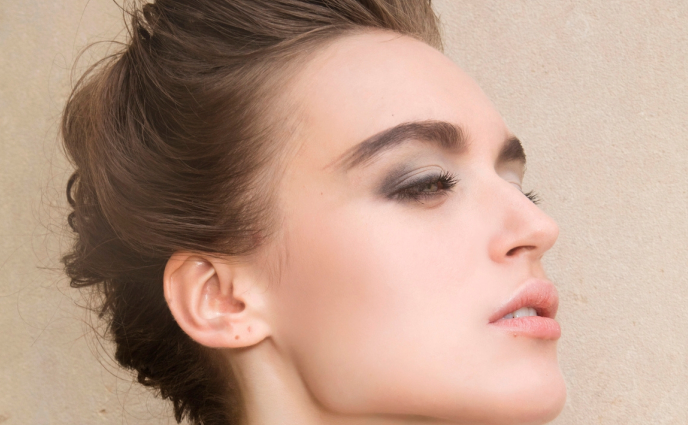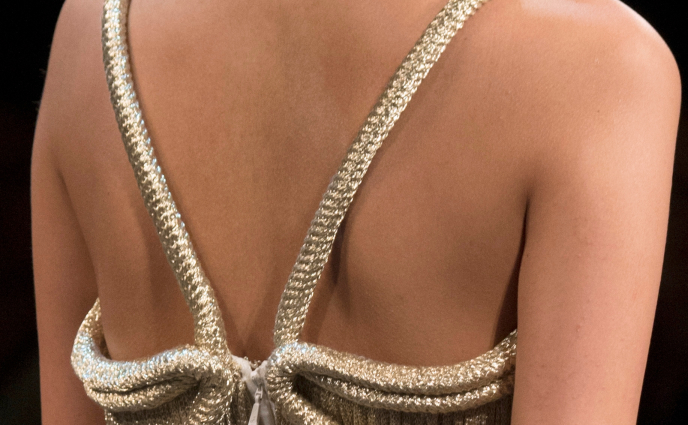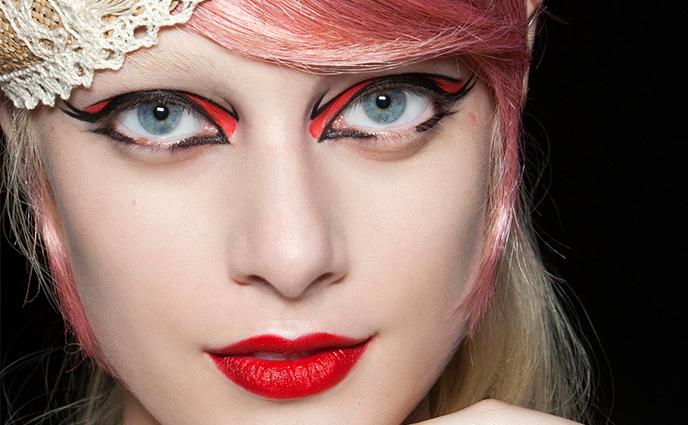The Cost: Salon gel manicures cost roughly $40.
How to Stretch It: Invest in an at-home gel manicure kit. To get that professional, I-paid-big-money-for-these look, follow this advice from China Glaze educator Sreynin Peng:
-Lay the brush down on the nail bed with a bit of room so you can push the brush as close as possible to the cuticle without touching the cuticle.
-Pull the product down towards the tip, covering the nail bed completely, then cap the free edge to finish.
-Fix smudges before applying and curing the top coat. Once you fix it, recap free edge and cure.
Total Savings: Salon gel manicures last about two weeks. If you get your digits lacquered twice monthly, you spend $960 per year on gel manicures -- yikes. If you switch to at-home gel manicures, you spend about $65 for the LED light and starter kit and $11.99 for every bottle of polish and top coat. That's a savings of $870 initially and over $900 once you factor out the one-time cost of the LED light.
How to Stretch It: Invest in an at-home gel manicure kit. To get that professional, I-paid-big-money-for-these look, follow this advice from China Glaze educator Sreynin Peng:
-Lay the brush down on the nail bed with a bit of room so you can push the brush as close as possible to the cuticle without touching the cuticle.
-Pull the product down towards the tip, covering the nail bed completely, then cap the free edge to finish.
-Fix smudges before applying and curing the top coat. Once you fix it, recap free edge and cure.
Total Savings: Salon gel manicures last about two weeks. If you get your digits lacquered twice monthly, you spend $960 per year on gel manicures -- yikes. If you switch to at-home gel manicures, you spend about $65 for the LED light and starter kit and $11.99 for every bottle of polish and top coat. That's a savings of $870 initially and over $900 once you factor out the one-time cost of the LED light.
The Cost: While hair coloring varies largely based on the process, location and salon, it's safe to say that a single process without any repair or add-ons is going to run you about $70.
How to Stretch It: Ask your stylist for advice on how to find the right color for in-between visits to the salon. Shaun Surething, lead stylist and co-owner of Seagull Salon in New York City, says that he mixes a custom at-home hair dye for his clients who want to get their hair professionally colored only once or twice a year. "Any reasonable colorist will formulate one for you," he says. Surething recommends this option only for those who need to cover grays and their roots -- not all-over dye jobs. When you do go for color, ask for balayage highlights, ombré or dip dye -- low-maintenance (and trendy) dye jobs that you have to touch up only once or twice a year. If you want all-over highlights, Surething suggests that you ask for them to be placed underneath your part rather than at the top of the crown. That way, you won't sport a telltale line of regrowth after two months.
Total Savings: If you get your hair done every two months, you spend about $420 per year -- and that's just if you get the no-frills, single process. If you cut back to twice-yearly, low-maintenance dye jobs, you'll save about $220 per year.
How to Stretch It: Ask your stylist for advice on how to find the right color for in-between visits to the salon. Shaun Surething, lead stylist and co-owner of Seagull Salon in New York City, says that he mixes a custom at-home hair dye for his clients who want to get their hair professionally colored only once or twice a year. "Any reasonable colorist will formulate one for you," he says. Surething recommends this option only for those who need to cover grays and their roots -- not all-over dye jobs. When you do go for color, ask for balayage highlights, ombré or dip dye -- low-maintenance (and trendy) dye jobs that you have to touch up only once or twice a year. If you want all-over highlights, Surething suggests that you ask for them to be placed underneath your part rather than at the top of the crown. That way, you won't sport a telltale line of regrowth after two months.
Total Savings: If you get your hair done every two months, you spend about $420 per year -- and that's just if you get the no-frills, single process. If you cut back to twice-yearly, low-maintenance dye jobs, you'll save about $220 per year.
The Cost: A spray tan by a machine costs about $25 to $50 and lasts up to one week. If you want it done by hand (which usually yields better results), then you pay $65 to $90.
How to Stretch It: To make your tan last longer between sprays, Natalie and Celene Gee, owners of Gee Beauty, say that prep is key. Buff your skin pre-spray with a grainy scrub, like one of our top-rated body scrubs.
Other tips:
-Don't bathe or sweat for eight to 12 hours after your spray tan -- the tan is still setting during this time and will be washed off if it gets wet.
-Lightly exfoliate after the third day of your spray tan to keep the tan even.
-Moisturize, moisturize, moisturize! A spray tan lasts longer on well-hydrated skin.
-Avoid products with mineral oils or alcohol, as they fade that bronze-y glow.
-Invest in an at-home product to keep your tan going for an extra week.
Total Savings: With these tips, your tan will last two weeks instead of one. If you tan weekly, you'll save $50 to $180 dollars per month -- that's $600 to $2,160 per year.
How to Stretch It: To make your tan last longer between sprays, Natalie and Celene Gee, owners of Gee Beauty, say that prep is key. Buff your skin pre-spray with a grainy scrub, like one of our top-rated body scrubs.
Other tips:
-Don't bathe or sweat for eight to 12 hours after your spray tan -- the tan is still setting during this time and will be washed off if it gets wet.
-Lightly exfoliate after the third day of your spray tan to keep the tan even.
-Moisturize, moisturize, moisturize! A spray tan lasts longer on well-hydrated skin.
-Avoid products with mineral oils or alcohol, as they fade that bronze-y glow.
-Invest in an at-home product to keep your tan going for an extra week.
Total Savings: With these tips, your tan will last two weeks instead of one. If you tan weekly, you'll save $50 to $180 dollars per month -- that's $600 to $2,160 per year.
The Cost: Department store makeup doesn't come cheap. Those gold-plated tubes of lipstick typically cost $20 to $30. High-end foundation averages $40 to $100. Anti-aging lotions and potions sport the highest price tags, starting at about $30 and shooting up to $300 or $400 -- and if you crave the really luxe stuff, it's possible to spend as much as $1,000 on prestige skin cream.
How to Stretch It: Shop smart. According to cosmetic chemist Ron Robinson, "luxury" makeup and skin care products are often smoke and mirrors. "[Drugstore] facial cleansers and toners use similar ingredients as [products sold at] department stores," he says. As for makeup, Robinson says you ought to save on mascara, since formulations don't vary much from department store to drugstore. "Some department store brands actually try to copy drugstore brands," he says.
Total Savings: Considering you're supposed to replace your mascara every three months, you can save $60 to $132 per year. Drugstore cleansers and toners usually cost less than half the price of similar department store products, so you can cut that expense in half -- probably a savings of at least $60 per year on those two products alone. For example, if you switch from Philosophy Purity Made Simple Cleanser, $23, to Neutrogena Naturals Purifying Facial Cleanser, $7.49, you'll save almost $50 if you're replacing it three times a year. Make similar swaps with your toner, moisturizer, eye cream, etc., and the savings will continue to add up.
How to Stretch It: Shop smart. According to cosmetic chemist Ron Robinson, "luxury" makeup and skin care products are often smoke and mirrors. "[Drugstore] facial cleansers and toners use similar ingredients as [products sold at] department stores," he says. As for makeup, Robinson says you ought to save on mascara, since formulations don't vary much from department store to drugstore. "Some department store brands actually try to copy drugstore brands," he says.
Total Savings: Considering you're supposed to replace your mascara every three months, you can save $60 to $132 per year. Drugstore cleansers and toners usually cost less than half the price of similar department store products, so you can cut that expense in half -- probably a savings of at least $60 per year on those two products alone. For example, if you switch from Philosophy Purity Made Simple Cleanser, $23, to Neutrogena Naturals Purifying Facial Cleanser, $7.49, you'll save almost $50 if you're replacing it three times a year. Make similar swaps with your toner, moisturizer, eye cream, etc., and the savings will continue to add up.
The Cost: For most of us, haircuts cost about $40 to $100.
How to Stretch It: To cut down on salon visits, Surething says the one cut you should avoid at all costs is a blunt, A-line bob. Ask for something low-maintenance and layered, like a long or medium shag.
No matter what length you decide, says celebrity stylist Lee Rittiner, you should never ask for bangs. "You always have to style bangs," says Rittiner, which means frequent trips back to the salon for trims. If you're a devoted member of the bangs society and simply will not give them up, try cutting them on your own. Rittiner suggests trimming bangs by holding your shears vertically, so the point is going into your fringe. "Never, ever cut a blunt line," he says. Surething says to separate the bangs into small pieces, cutting into them vertically (no more than 1/4") with thinning shears from the middle and working your way out.
Total Savings: By getting a low-maintenance cut that only needs updating twice a year rather than every two months, you'll save $160 to $400.
How to Stretch It: To cut down on salon visits, Surething says the one cut you should avoid at all costs is a blunt, A-line bob. Ask for something low-maintenance and layered, like a long or medium shag.
No matter what length you decide, says celebrity stylist Lee Rittiner, you should never ask for bangs. "You always have to style bangs," says Rittiner, which means frequent trips back to the salon for trims. If you're a devoted member of the bangs society and simply will not give them up, try cutting them on your own. Rittiner suggests trimming bangs by holding your shears vertically, so the point is going into your fringe. "Never, ever cut a blunt line," he says. Surething says to separate the bangs into small pieces, cutting into them vertically (no more than 1/4") with thinning shears from the middle and working your way out.
Total Savings: By getting a low-maintenance cut that only needs updating twice a year rather than every two months, you'll save $160 to $400.
Beauty is pain -- anyone who has gotten anything waxed or walked for longer than five minutes in heels knows that. But you know what else beauty is? Expensive. The powers that be know that we'll fork over big money for services and products that make us look and feel great. We've put together some tips and tricks so you can make those beauty treatments you love last -- without breaking the bank.





